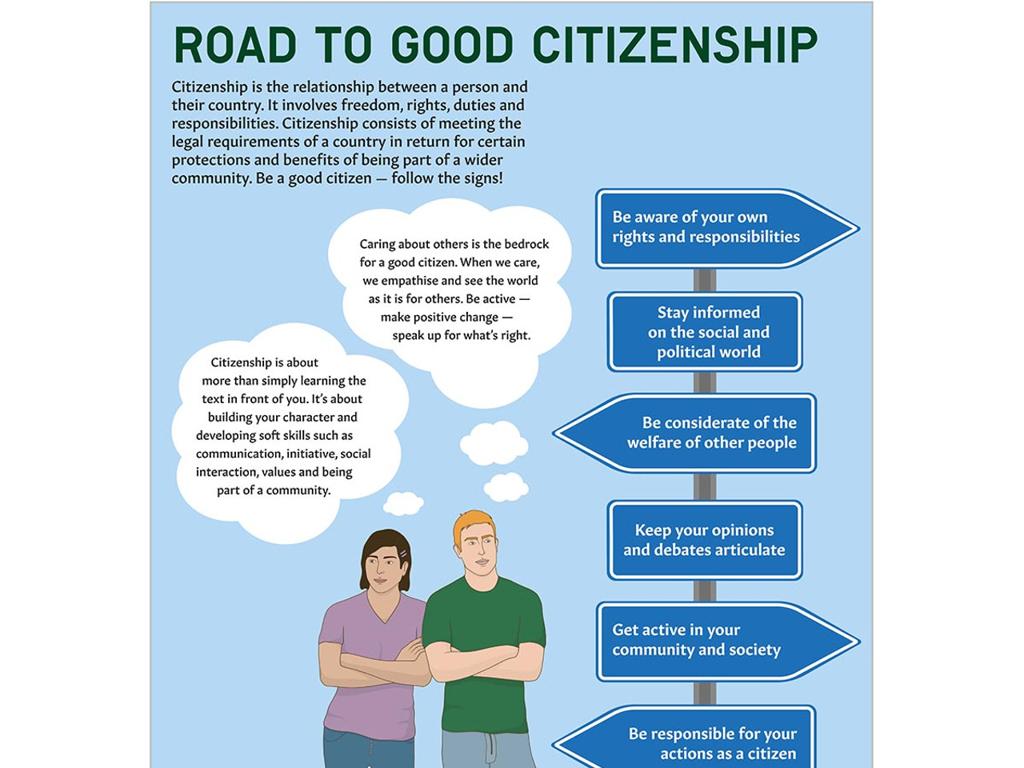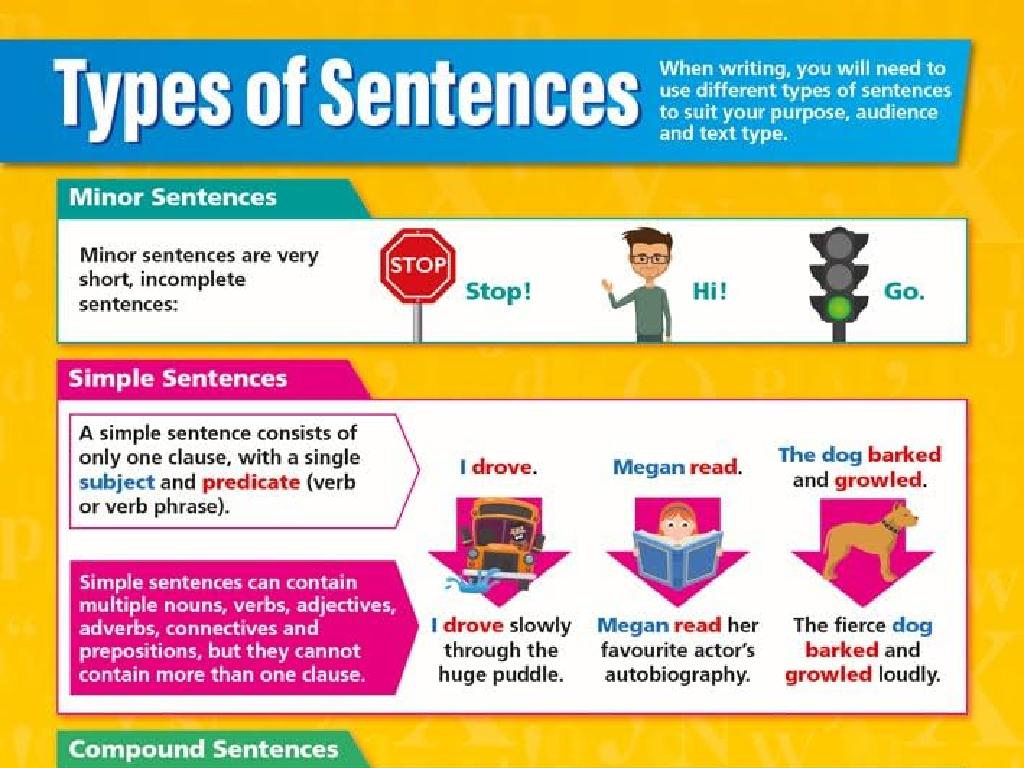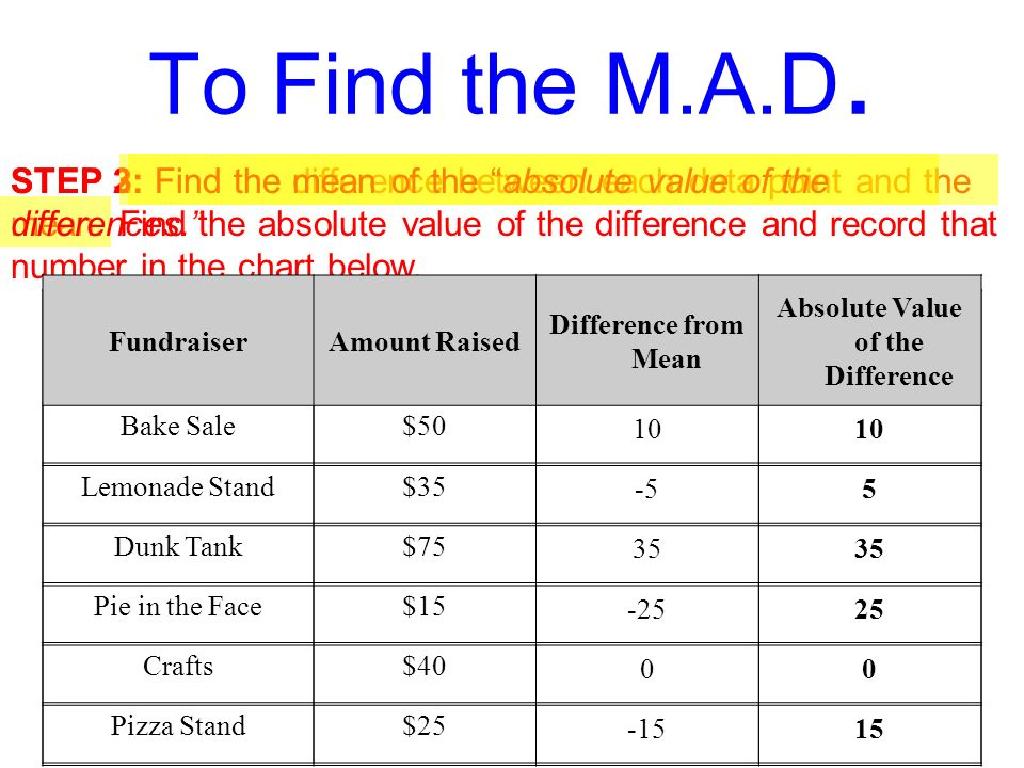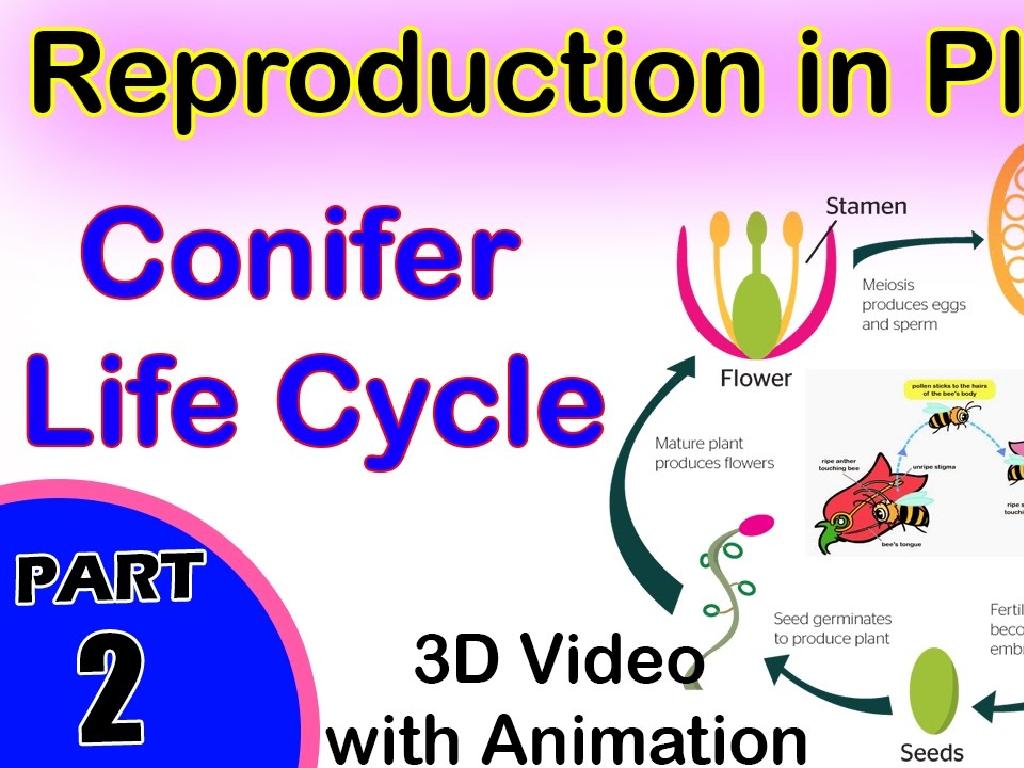Identify Story Elements
Subject: Language arts
Grade: Third grade
Topic: Story Elements
Please LOG IN to download the presentation. Access is available to registered users only.
View More Content
Welcome to Story Elements!
– Discover parts of a story
– Why story elements matter
– Knowing characters, setting, plot helps us understand stories better
– Become a better reader
– Recognizing story parts helps us predict and comprehend what we read
– Improve your writing skills
– Using story elements makes our own stories more interesting and complete
|
This slide introduces the concept of story elements to third-grade students, emphasizing the importance of understanding the different parts that make up a story. Explain that a story is like a puzzle, and each element is a piece that fits together to create a complete picture. Emphasize how recognizing characters, setting, and plot can enhance their reading comprehension, allowing them to predict what might happen next and understand the story more deeply. Additionally, highlight how using these elements in their writing can make their stories more engaging and structured. Encourage students to think of their favorite stories and identify the different elements in them as a class activity.
Exploring Story Elements
– Story elements: a story’s ingredients
– Main elements: characters, setting, plot
– Characters are who the story is about. The setting is where and when the story takes place. The plot is the main events.
– Discovering problems in stories
– The problem is a challenge characters must face.
– Finding solutions in story endings
– The solution is how characters solve the problem.
|
This slide introduces the basic components that form a story, aimed at helping third-grade students understand and identify the different elements within a story. Characters are the people or animals in the story, the setting provides the backdrop and context, the plot is the sequence of events that take the characters through a journey, the problem is the central challenge or conflict that drives the narrative, and the solution is how the characters resolve the conflict. Encourage students to think of their favorite stories and identify these elements to help them grasp the concepts. Use simple and familiar stories as examples to illustrate each element.
Exploring Characters in Stories
– Characters: Who are they?
– They can be people, animals, or creatures.
– Describing characters
– What do they look like? How do they behave?
– Importance of characters
– They drive the story forward and make us care.
– Characters make stories lively
|
This slide introduces the concept of characters in storytelling. Characters are the heart of any story, and they can be people, animals, or even mythical creatures. It’s important for students to learn how to describe characters by their physical appearance, actions, and emotions. Discuss why characters are essential, as they not only drive the plot but also engage the reader’s imagination and emotions. Encourage students to think of their favorite story and describe the main character. This will help them understand the role of characters in making stories interesting and relatable.
Exploring Story Settings
– Understanding ‘setting’ in stories
– Setting is the time and place of the action.
– ‘Where’ and ‘when’ a story unfolds
– Could be past, present, future, or a fantasy world.
– Examples of story settings
– A beach on a sunny day, a distant planet, the 1800s in London.
– How setting affects a story
– Setting can change the mood and plot of a story.
|
This slide introduces the concept of ‘setting’ in a story, which is crucial for students to understand as it provides the backdrop against which the narrative takes place. Discuss the ‘where’ and ‘when’ aspects of setting, and provide vivid examples from familiar stories or create hypothetical ones that will resonate with third graders. Explain how different settings can change the mood of the story, such as a spooky castle at night versus a sunny day at the park. Encourage students to think about their favorite stories and what makes the settings in those stories special or interesting.
Exploring the Plot of a Story
– What is a plot?
– The plot is the sequence of events in a story.
– Parts of a story: Beginning
– The beginning introduces the setting and characters.
– Parts of a story: Middle
– The middle shows the main events and challenges.
– Parts of a story: End
– The end reveals the resolution of the story.
|
This slide introduces the concept of ‘plot’ to third-grade students. The plot is essentially the backbone of any story, outlining the sequence of events from start to finish. It’s important to break down the story into three parts for easier understanding: the beginning, where students learn about the setting and characters; the middle, where the main events and conflicts occur; and the end, where the story reaches a conclusion. Encourage students to think of their favorite stories and identify these elements. This will help them grasp the structure of storytelling and improve their narrative comprehension and writing skills.
Understanding Story Elements: Problem & Solution
– Every story has a problem
– Characters work to solve it
– How is the problem solved?
– Think about the steps characters take to find a solution
– Why is this important?
– Knowing this helps us understand the story better
|
This slide introduces the concept of problem and solution as key elements of a story. Begin by explaining that a problem is a challenge or obstacle that the characters must overcome. Discuss with students how identifying the problem helps them to understand the story’s plot. Encourage them to think about the actions and decisions characters make to solve the problem. Emphasize the importance of this element by explaining that the problem and solution drive the story forward and keep it interesting. Ask students to think of their favorite stories and the problems encountered by the characters. For homework, they could identify the problem and solution in a story they read.
Let’s Practice Identifying Story Elements!
– Read a short story as a class
– Think about the characters
– Who are in the story? What are they like?
– Consider the setting and plot
– Where and when does the story take place? What happens?
– Discuss the problem and solution
– What challenges do characters face? How do they solve them?
|
This slide is for a class activity aimed at helping students identify and understand the different elements of a story. Start by reading a short story together with the class. Encourage the students to actively think about the characters, setting, plot, problem, and solution as they listen. Ask guiding questions to prompt them to consider the traits and motivations of the characters, the time and place of the story, the sequence of events, the central conflict, and how it is resolved. After reading, facilitate a discussion where students share their observations. This will help reinforce their understanding of story elements and improve their analytical skills in literature.
Class Activity: Craft Your Story Elements
– Choose characters and setting
– Draw story’s beginning, middle, end
– Share your story with the class
– Explain the elements of your story
– Characters, setting, plot, and conclusion
|
This activity is designed to help students apply their understanding of story elements by creating their own stories. Students should think creatively to choose characters and a setting that excite them. Encourage them to draw the beginning, middle, and end of their stories to visualize the plot development. When sharing with the class, prompt them to explain how they used the story elements to build their narrative. Possible activities: 1) Pair students to discuss their story ideas. 2) Create a story elements chart for reference. 3) Have a ‘story gallery walk’ where students leave their drawings on their desks and walk around to see classmates’ work. 4) Allow students to act out parts of their stories. 5) Provide feedback to each student to help them understand their strengths and areas for improvement in storytelling.






